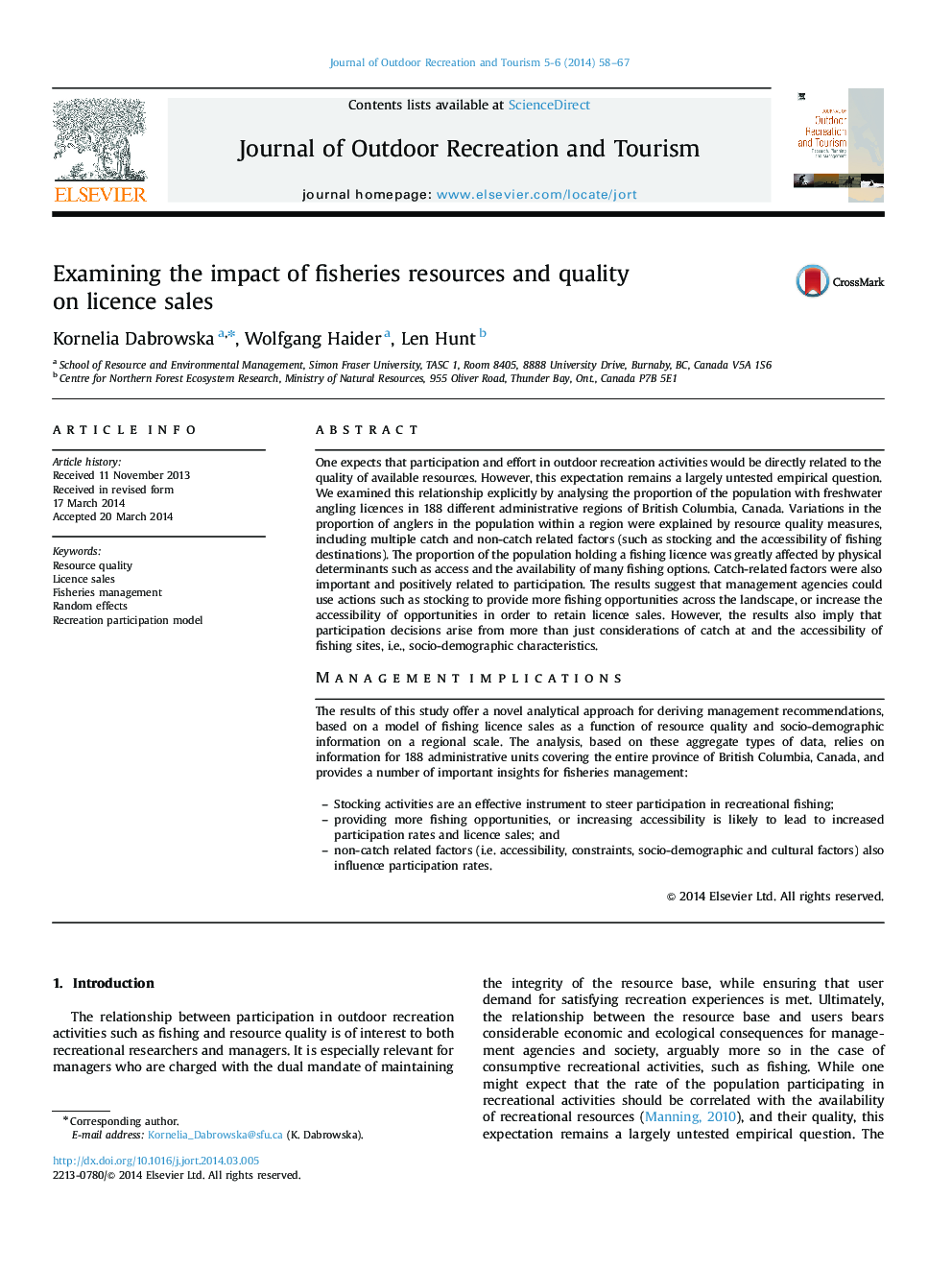| Article ID | Journal | Published Year | Pages | File Type |
|---|---|---|---|---|
| 92432 | Journal of Outdoor Recreation and Tourism | 2014 | 10 Pages |
One expects that participation and effort in outdoor recreation activities would be directly related to the quality of available resources. However, this expectation remains a largely untested empirical question. We examined this relationship explicitly by analysing the proportion of the population with freshwater angling licences in 188 different administrative regions of British Columbia, Canada. Variations in the proportion of anglers in the population within a region were explained by resource quality measures, including multiple catch and non-catch related factors (such as stocking and the accessibility of fishing destinations). The proportion of the population holding a fishing licence was greatly affected by physical determinants such as access and the availability of many fishing options. Catch-related factors were also important and positively related to participation. The results suggest that management agencies could use actions such as stocking to provide more fishing opportunities across the landscape, or increase the accessibility of opportunities in order to retain licence sales. However, the results also imply that participation decisions arise from more than just considerations of catch at and the accessibility of fishing sites, i.e., socio-demographic characteristics.Management implicationsThe results of this study offer a novel analytical approach for deriving management recommendations, based on a model of fishing licence sales as a function of resource quality and socio-demographic information on a regional scale. The analysis, based on these aggregate types of data, relies on information for 188 administrative units covering the entire province of British Columbia, Canada, and provides a number of important insights for fisheries management:–Stocking activities are an effective instrument to steer participation in recreational fishing;–providing more fishing opportunities, or increasing accessibility is likely to lead to increased participation rates and licence sales; and–non-catch related factors (i.e. accessibility, constraints, socio-demographic and cultural factors) also influence participation rates.
